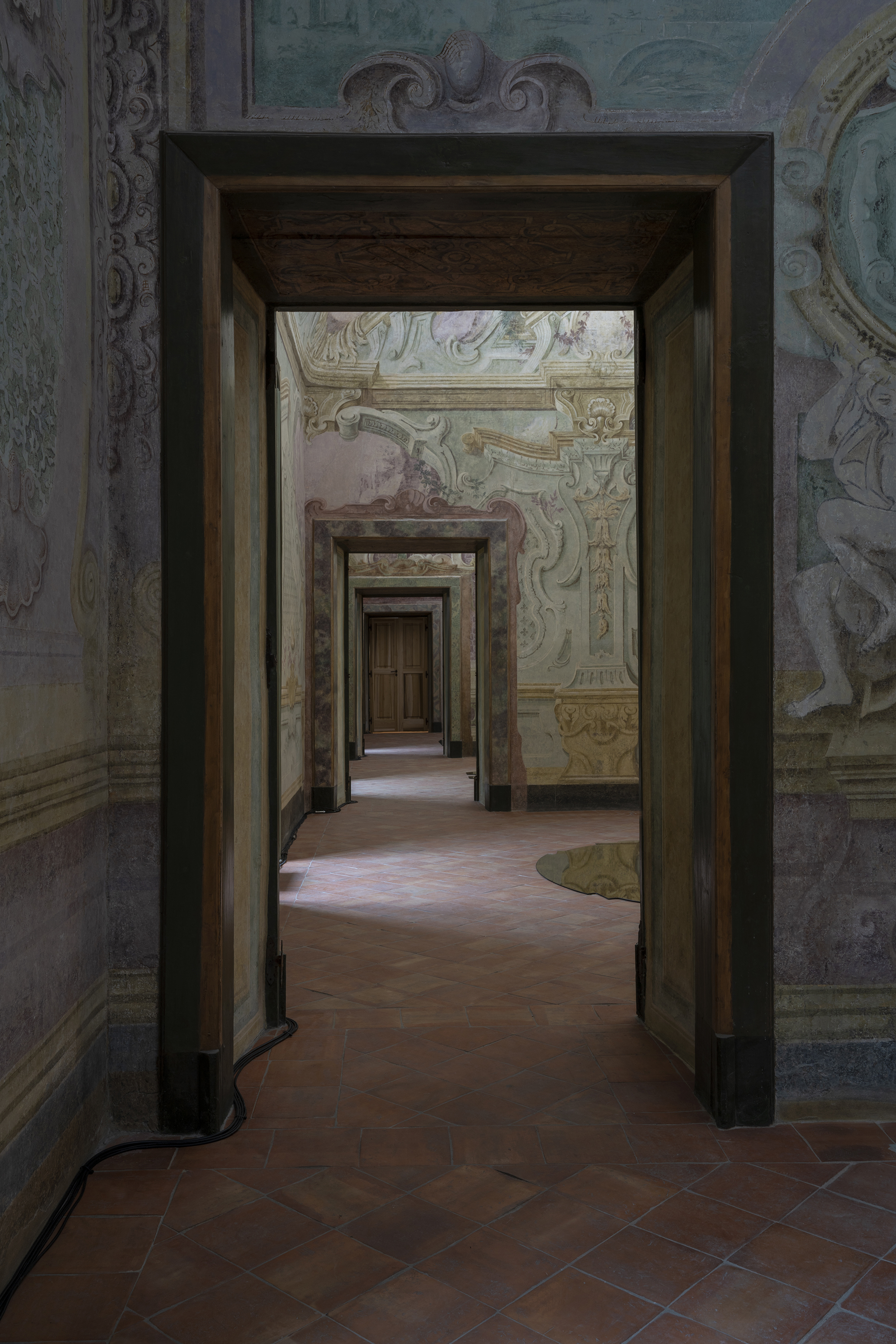19122019 \\ 22022020
SCENE DESCRIPTION
1. CONTEXT IS CONTENT
The exhibition inhabits six frescoed rooms on the first floor of the Palazzo Caracciolo d’Avellino, as well as the building’s basement. The basement contains ancient Greek ruins which were uncovered, along with the frescos, during a renovation initiated by Fondazione Morra Greco in 2015. The frescos were executed in the early 18th century by Giacomo del Po (1654-1726) and his collaborators, by commission of Marino III Caracciolo (1668-1720) & Antonia Spinola (1669-1744).
Palazzo Caracciolo d’Avellino was converted from a Benedictine monastery in 1610 by Marino II Caracciolo (1587- 1630) and Francesca d’Avalos d’Aquino d’Aragona (d. 1676). During this period Giambattista Basile (1566-1632) was the court writer of the Prince Caracciolo d’Avellino. In 1619, Basile composed and published an idyll in Prince Marino’s honour: the story of Arethusa.
Fondazione Morra Greco has operated an exhibition and residency program in Palazzo Caracciolo d’Avellino since 2006. From April to December, 2019, Studio for Propositional (founded 2013) lived in residence at Fondazione Morra Greco. The exhibition script is loosely based on the Basile’s Arethusa.
2. MYTHS ARE LIVING STRUCTURES
The Arethusa myth in poetry can be traced through Virgil (40 B.C.), Ovid (8 A.D.), John Milton (1634), John Keats (1818), Percy Bysshe Shelley (1820), and Ezra Pound (1956), among others. It depicts the river nymph Arethusa who, one day after hunting, bathes in a stream that is actually the river god Alpheus, who falls in love with her and pursues her against her will. To evade capture, Arethusa enacts several escape attempts; firstly she flees, but is out-endured by Alpheus; secondly she hides in a cloud conjured by her patron Diana, the goddess of hunting, which, as she perspires as Alpheus grows near, turns into water; finally she finds escape through a hole in the earth and flees her homeland in Greece, emerging as a fountain in Syracuse, Italy. In different tellings she variously escapes Alpheus, or her pursuer returns to liquid form and mingles with her waters in violent conclusion.
The endurance of Arethusa’s story lies in its thinly veiled allegorisation of gender struggle, sexual freedom, empiricism, colonialism, forced migration, and other never-ending battles between the conflicting desires for freedom and the desires for domination that define the human condition.
Stories are open structures that may be occupied at any time by anyone, alterable to suit their needs. Because their structural integrity is proven, they are convenient and expedient bases from which to act, shortcuts to understanding our present and imagining our futures.
3. STORIES ARE BLUEPRINTS
Narratives sketch out potential realities in manners relatable across cultures, geographies, and generations. It is no coincidence that they have been the building blocks of all religions who have attempted to exert control through the manipulation of desire through the pull of the imaginary. Retaining or reclaiming control of the narratives that structure our lives and desires is the foundation for constructing the shape and content of our futures.
The stories we tell can be used as prototypes for the worlds we want to build. It is our responsibility to construct these stories not just for ourselves but also for unknown futures. As long as they stay alive they can exist as possibilities for a better world, no matter how remote or unlikely.
This is not fantasy, this is realism.
Studio For Propositional Cinema
All images Courtesy Fondazione Morra Greco, Napoli
© Maurizio Esposito

































